When it comes to upgrading home windows, uPVC (Unplasticized Polyvinyl Chloride) is one of the most popular options for modern houses in India. Known for their resistance to wear and tear and low maintenance, uPVC windows are an investment that will surely pay off once homeowners enjoy increased aesthetic appeal along with energy-saving benefits.
Post your Requirement
Choosing the right size at the time of buying uPVC windows is one of the major factors. Suitable size guarantees proper fitting and functioning besides long-term use. Here is a vast guide about the standard sizes in India with insights into the most common types of uPVC windows.
What Are uPVC Windows?
uPVC windows are made of an extremely durable, weather-resistant material called Unplasticized Polyvinyl Chloride (uPVC). Unlike traditional wooden windows, uPVC windows do not require frequent maintenance and are resistant to moisture, corrosion, termites, and fading. These qualities make uPVC windows ideal for homes in India, especially considering the country’s diverse weather conditions.
Apart from being highly functional, uPVC windows are also available in a variety of styles and sizes. The material is flexible enough to allow for various designs and is energy-efficient, helping homeowners reduce their electricity bills by offering better insulation compared to wooden or metal windows.
Types Of uPVC Windows Available In India
There are various styles of uPVC windows, with each type offering different benefits. Different window types may be suitable depending on the architectural style of your home and functional requirements. The most common types of uPVC windows in India are as follows:
1. uPVC Casement Windows
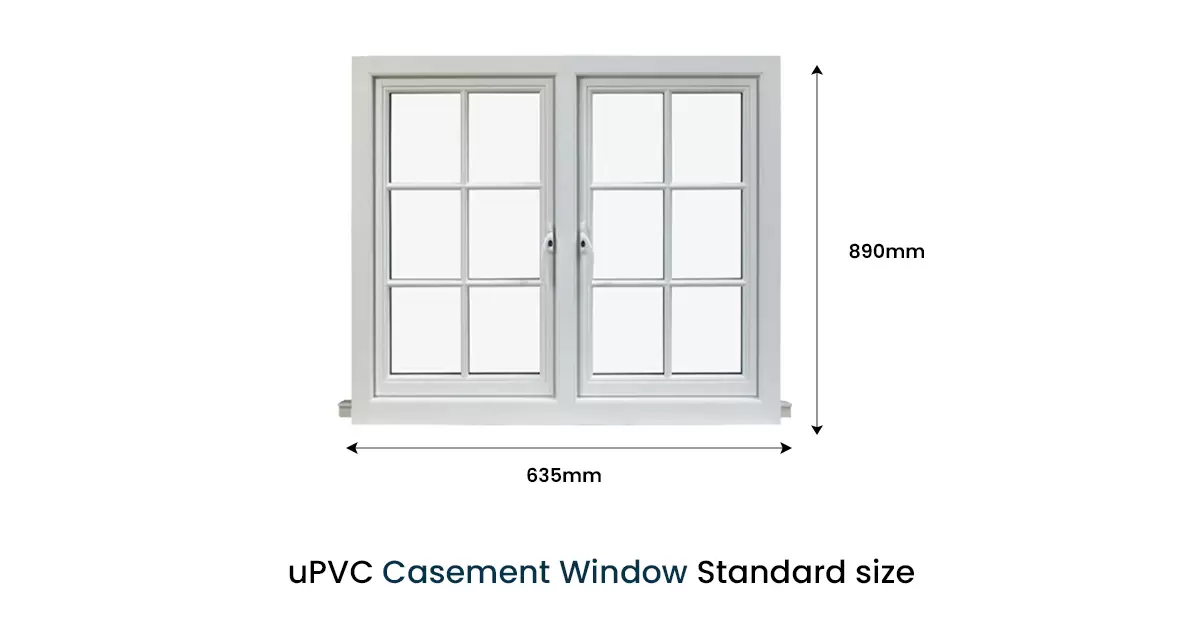
uPVC Casement windows are hinged at one side, and they open outwards like a door. These are the most commonly used uPVC window types in India due to their excellent ventilation and ease of operation mechanism. They allow unobstructed views and are highly secure. Casement windows are widely used in modern homes and are available in both single and double-leaf designs.
Standard uPVC Casement Window Sizes (Widths & Heights)
|
Standard Window Widths |
Standard Window Heights |
|
635mm |
890mm |
|
736mm |
1,194mm |
|
736mm |
1,498mm |
2. uPVC Sash Windows:
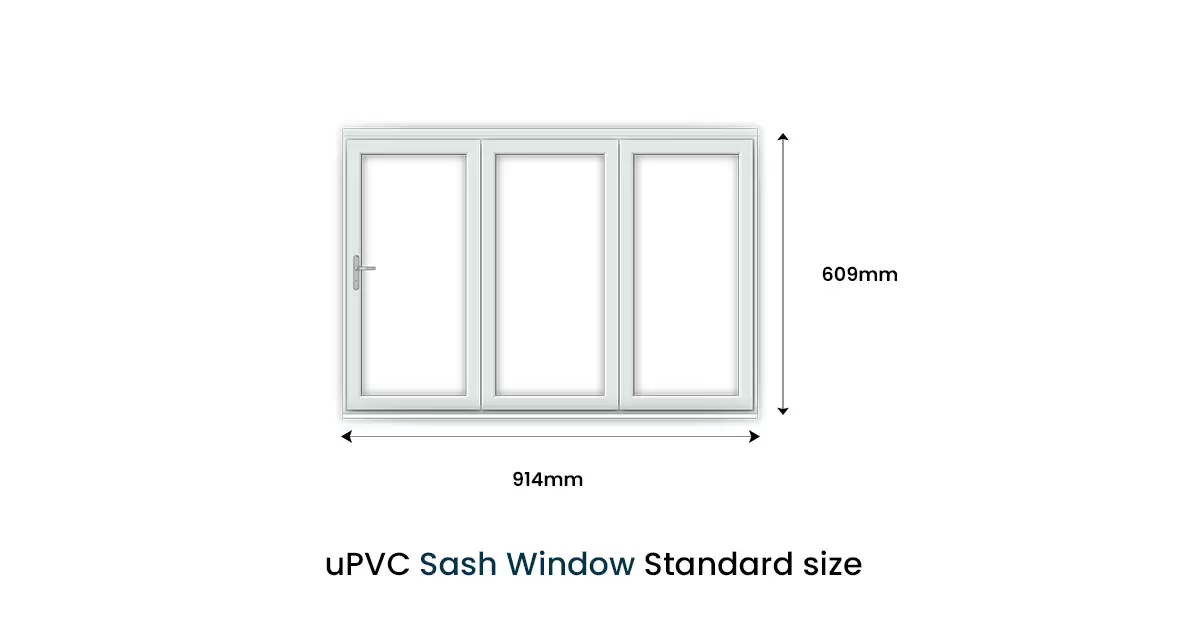
uPVC Sash windows are two-panel windows that slide vertically, one above the other, hence the name. They can be found in most traditional or colonial-style homes. They allow good ventilation and a charming look of old. Although uPVC sash windows are a new option, they still look classic and boast the advantages of modern uPVC materials.
Standard uPVC Sash Window Sizes (Widths & Heights)
|
Standard Window Widths |
Standard Window Heights |
|
914mm |
609mm |
|
1,219mm |
914mm |
|
1,524mm |
1,219mm |
|
1,829mm |
1,524mm |
|
2,134mm |
1,524mm |
3. uPVC Tilt And Turn Windows:
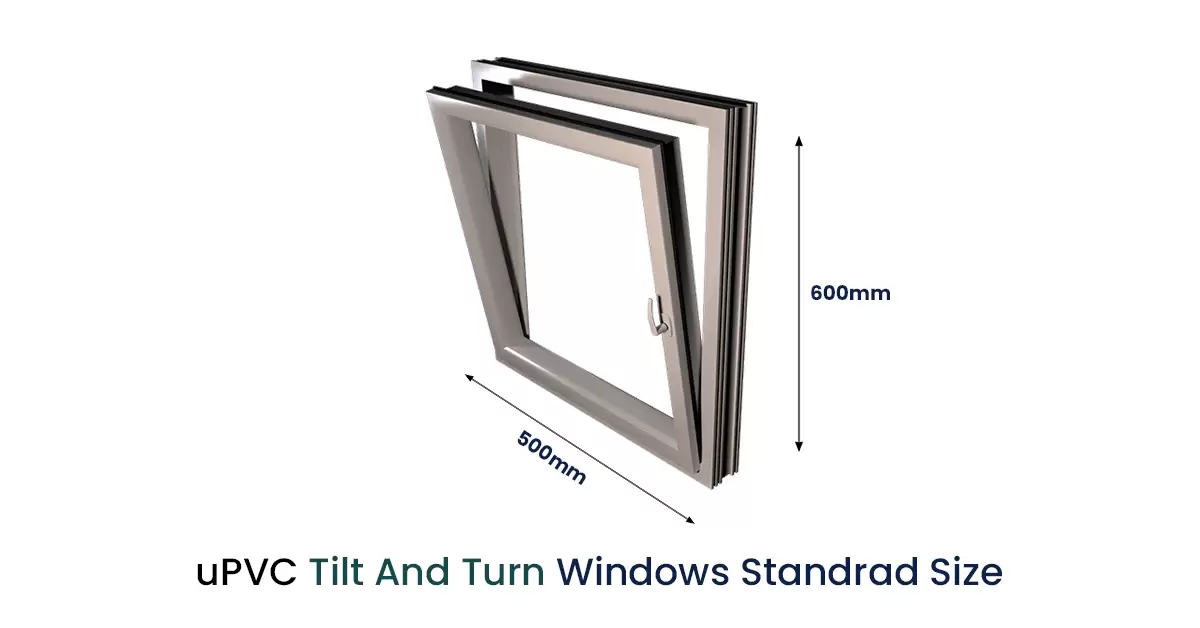
uPVC Tilt and turn windows are versatile because they can open in two ways; they can either tilt inward for ventilation or turn fully inward for easy cleaning and maintenance. They are mostly used in modern homes because of their modern design and multiple functionalities.
Standard uPVC Tilt and Turn Window Sizes (Widths & Heights)
|
Type |
Standard Window Widths |
Standard Window Heights |
| Single Tilt and Turn |
500mm (min) |
600mm (min) |
| 1,300mm (max) |
1,900mm (max) |
|
| Double Tilt and Turn |
1,200mm (min) |
600 (min) |
| 2,400mm (max) |
1,700mm (max) |
|
| Triple Tilt and Turn (2 Outer Opening Panes) |
1,600mm (min) |
600 (min) |
| 3,000mm (max) |
1,900mm (max) |
4. uPVC Bow Windows:
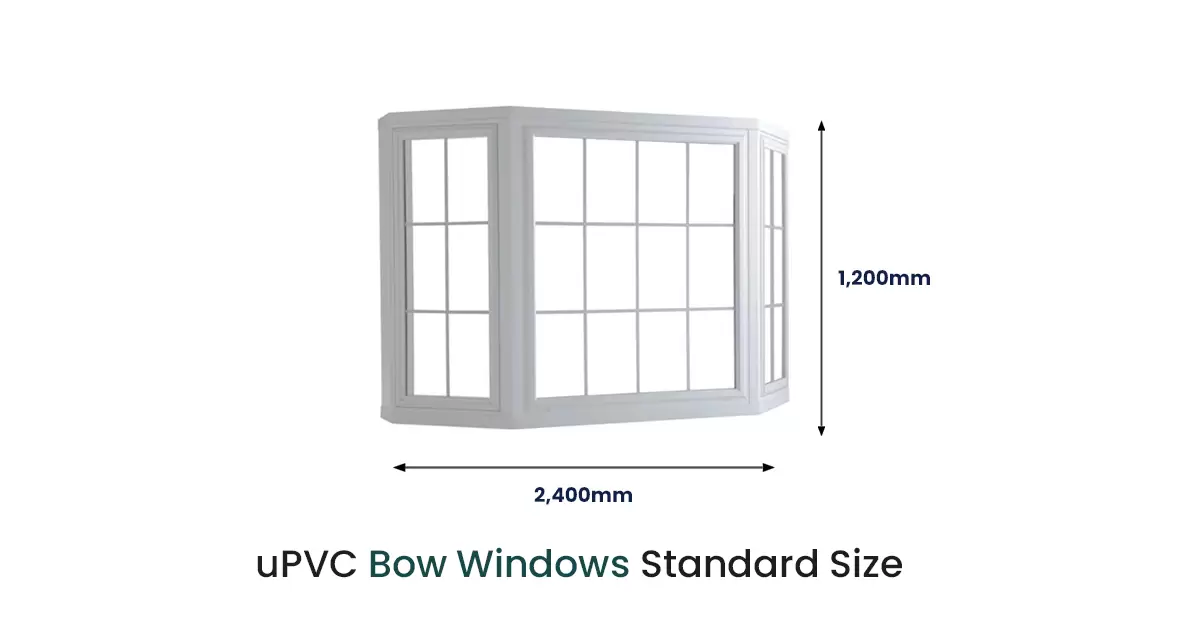
uPVC Bow windows are four or more windows connected to form a rounded or arc shape. These windows project out from the wall, adding to the space inside the room and providing expansive views of the outdoors. They add perfect beauty to living rooms and dining areas.
Standard uPVC Bow Window Sizes (Widths & Heights)
|
Standard Window Widths |
Standard Window Heights |
|
2,400mm |
1,200mm |
|
3,000mm |
1,500mm |
5. uPVC Bay Windows:
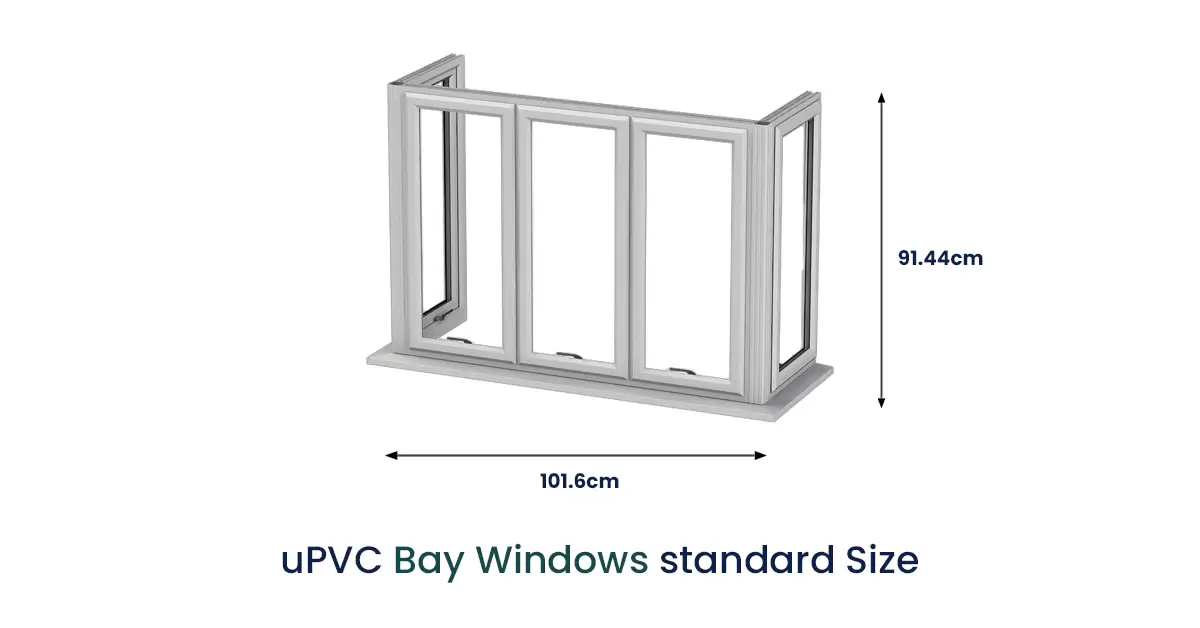
uPVC Bay windows, just like bow windows, protrude from the side of the building. However, bay windows are usually three windows — a big centre window and two smaller windows at angles on each side. These windows increase additional interior space, more natural light, and the view.
Standard uPVC Bay Window Sizes (Widths & Heights)
|
Standard Window Widths |
Standard Window Heights |
|
101.6cm (minimum width) |
91.44cm (minimum width) |
|
320cm (maximum width) |
198.12cm (maximum width) |
Read Also: 10 Types Of uPVC Windows For Your Home
Common uPVC Window Sizes In India
uPVC window sizes can differ based on the window style and manufacturer specifications. Generally, uPVC windows are offered in various sizes that range from residential to commercial use. Below provided is a table for reference:
|
Standard uPVC Window Widths |
Standard uPVC Window Heights |
|
488mm (19 inches) |
488mm (18 inches) |
|
630mm (25 inches) |
600mm (24 inches) |
|
915mm (36 inches) |
1,050mm (42 inches) |
|
1,200mm (48 inches) |
1,200mm (48 inches) |
|
1,770mm (70 inches) |
1,350mm (54 inches) |
|
1,500mm (60 inches) |
1,350mm (54 inches) |
Why Choosing The Right Size Of uPVC Window Is Important?
Before choosing an uPVC window for your house, it is important to know what the right size is. This is because a window, if too big or small for the space allocated, presents several problems, such as poor insulation, poor handling, and aesthetic imbalance. Here are some reasons why the right size of the uPVC window matters:
- Fit And Functionality: The main reason for a window is to admit natural light and air into a room. A window that is too big might allow more heat than required, while a small-sized one may not give sufficient ventilation in the house. So, by choosing an appropriate size for your window, you ensure it serves the purpose intended without causing trouble like draft or excess heat.
- Energy Efficiency: uPVC windows have been known to have the best energy efficiency characteristics as they have better isolation qualities. A window may prove too large, that way, it will result in a waste of energy through poor insulation and a window may prove very small it will also deny sufficient sunlight. Sizing correctly helps in the management of energy use and significant money saved on electricity bills.
- Aesthetics: Your house may look different when considering its size. Big windows about the wall would cause a distorted view while under-proportionate windows can shrink a spacious space. To create a perfectly aesthetic look, proportionate windows concerning room space and architectural design will make the perfect work of art.
uPVC Window Price in India
The cost of uPVC windows in India differs according to size, design, and additional features like double glazing, customization, or security features. Here are some rough price estimates for various types of uPVC windows:
|
Window Type |
Price Range (per sq. ft.) |
|
uPVC Casement Windows |
₹350 to ₹600 |
|
uPVC Sash Windows |
₹400 to ₹700 |
|
uPVC Bow Windows |
₹600 to ₹1,000 |
|
uPVC Bay Windows |
₹500 to ₹800 |
|
uPVC Tilt and Turn Windows |
₹500 to ₹800 |
Note: The costs quoted above are approximate, and depend upon the exact features and personalization and also on the supplier. Furthermore, installation costs may differ depending on how complex it is to install.
Read In Detail: uPVC Windows Price in India
How To Measure uPVC Windows For Installation?
In case you replace old windows with new ones made from uPVC, proper measurement of window opening sizes is highly important in the installation process. This is how to measure uPVC windows;
- Measure The Width: Using a measuring tape, measure the width of the window frame at three points: top, middle, and bottom. Record the smallest measurement.
- Measure The Height: Measure the height of the window, similarly, take measurements at three points: left, centre, and right. Again, the smallest measurement is to be recorded for accuracy.
- Measure The Depth: Depth of the window frame: This is the measurement from the inside of the frame to the outside. Measurement of depth will ensure the new window fits perfectly.
- Check For Squareness: Check whether your window frame is square by measuring the diagonal distance between opposite corners. If the measurements are equal, it means the frame is square.
- Record And Double-check: Lastly, note down all the measurements and check them twice for accuracy before ordering.
Conclusion
Selecting the right uPVC window sizes for your house is a step in enhancing your house’s aesthetics, functionality, and energy efficiency. Knowing the different types of windows, standard sizes, and considerations such as room size and energy efficiency will help you make an informed decision.
Whether you’re looking for casement windows to fit your modern spaces, sash windows for that classic look, or bow and bay windows for luxury and natural light, there is a uPVC window design and size to suit your needs.
However, for a seamless experience, one should always look for professional window suppliers and installers. They would help choose the right uPVC window sizes for your home based on its specifications and install them in such a manner that they will operate at peak levels and for long periods of time. Therefore, take this opportunity to enhance your home today with the proper uPVC windows!

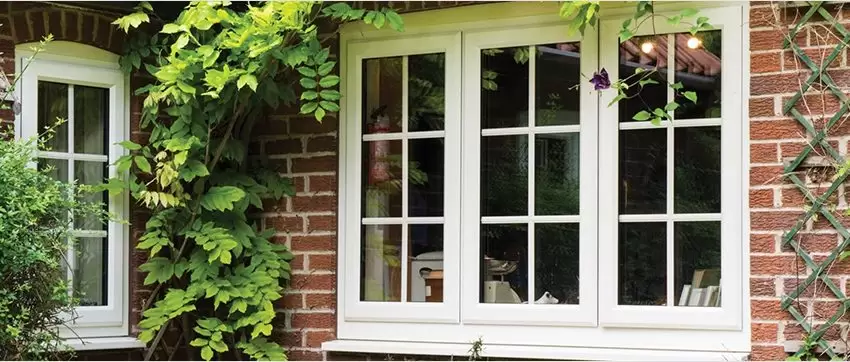

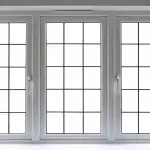
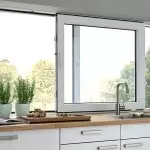


















Post A Comment